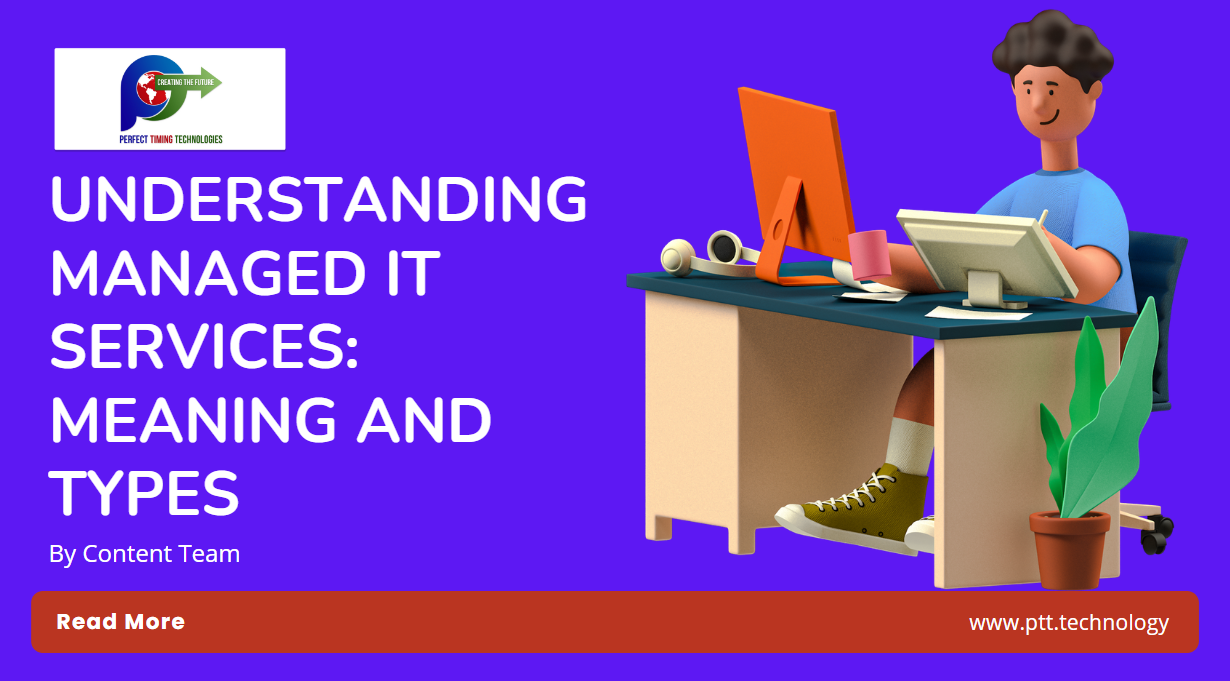
The invention of managed IT services dates back to the 1990s with the development of Application Service Providers(ASPs) that provided online application hosting services. ASPs enabled organizations to provide remote assistance to the client’s IT infrastructure rather than on-site support.
Managed IT services refer to outsourcing some or all of a company’s IT operations to a third-party service provider. The service provider assumes responsibility for the day-to-day management, maintenance, and monitoring of the company’s IT systems, infrastructure, and applications.
Managed IT services typically include a range of services, such as:
- Online monitoring and management of IT systems and infrastructure
- 24/7 help desk and support services
- Security management and data protection
- Cloud services, including hosting, backup, and disaster recovery
- Network management and maintenance
- Hardware and software procurement and installation
- IT consulting and strategic planning
The primary goal of managed IT services is to ensure that a company’s IT systems are running smoothly and efficiently and that any issues are quickly identified and resolved. By outsourcing IT operations to a managed services provider, companies can focus on their core business activities while leaving the management of IT to the experts.
How has Managed IT Services Evolved over the Years?
The evolution of managed IT services goes back to the early days of computing when companies began to outsource the management of their IT infrastructure to third-party service providers. However, the concept of managed IT services has evolved over the years since technology has advanced and business needs have changed.
In the 1990s, as the internet became more prevalent, managed IT services focused more on network management and security. Service providers began to offer remote monitoring and management services to help companies keep their networks secure and running smoothly.
With the rise of cloud computing in the 2000s, managed IT services expanded to include cloud services, such as hosting, backup, and disaster recovery. As companies began to adopt cloud-based solutions, managed services providers became critical in helping them migrate to the cloud and manage their cloud environments.
More recently, the managed IT services industry has evolved to include a greater focus on cybersecurity. With the increasing threat of cyber-attacks and data breaches, managed services providers have become essential in helping companies protect their networks, applications, and data.
Today, managed IT services continue to evolve to meet the changing needs of businesses. As companies increasingly rely on technology to run their operations, managed services providers ensure that their IT systems are secure, reliable, and optimized for business success.
Different Types of Managed IT Services
There are several types of Managed IT services mentioned below-
- Infrastructure Management: This includes managing and maintaining the hardware and software systems that support a company’s network, servers, storage, and other IT infrastructure.
- Network Management: This involves managing and monitoring a company’s network infrastructure, including switches, routers, firewalls, and other network devices, to ensure optimal performance and security.
- Security Management: This involves monitoring and managing a company’s security infrastructure, including firewalls, intrusion detection systems, antivirus software, and other security tools to protect against cyber threats.
- Cloud Management: This involves managing and optimizing a company’s cloud-based infrastructure, including virtual machines, storage, and applications hosted on cloud platforms like AWS, Azure, or Google Cloud.
- Data Management: This involves managing a company’s data infrastructure, including storage, backup, and recovery solutions, as well as data security and privacy.
- Help Desk and Technical Support: This includes technical support to end-users, such as troubleshooting hardware and software issues, resolving network connectivity problems, and providing remote assistance.
- Application Management: This involves managing and maintaining a company’s business-critical applications, such as ERP, CRM, or financial systems, to ensure optimal performance and availability.
Final Thoughts
Investing in managed IT services can help organizations improve their IT infrastructure’s performance, security, and reliability while reducing costs and increasing efficiency.
To enhance business operations, save costs, and simplify IT management consider outsourcing your IT systems maintenance tasks to a third party.
Talk to our IT experts today to know more.







